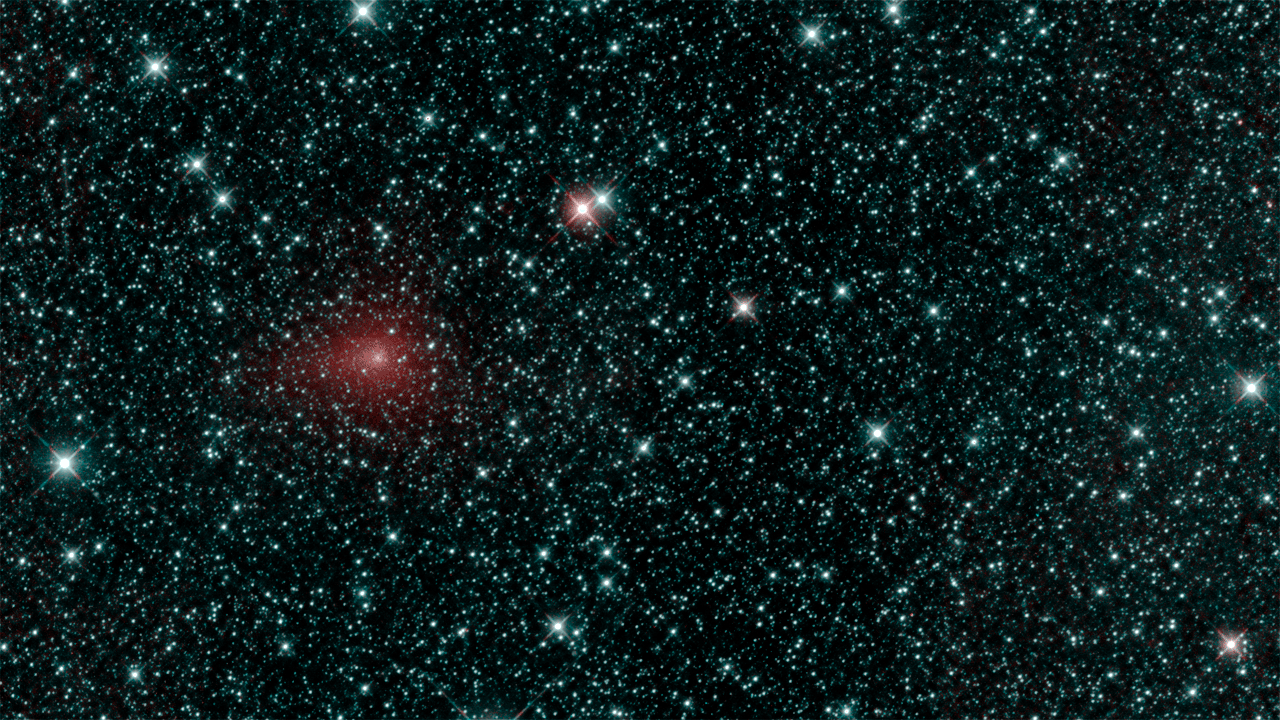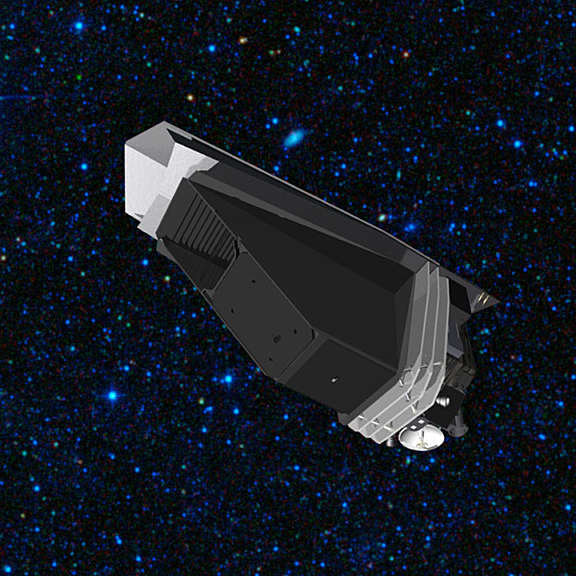Casey Dreier • Feb 23, 2023
Why we need the NEO Surveyor space telescope
The Near-Earth Object (NEO) Surveyor is a space telescope specially tuned to finding asteroids and comets that could collide with our planet. These are rare but potentially catastrophic events, and the earlier we identify any threats, the more likely it is that humanity can deploy protective deflection technology as demonstrated by NASA’s DART mission.
Because our night skies are now crowded with thousands of bright satellites and asteroids are tiny and dark, ground-based telescopes have trouble finding NEOs quickly. Placing a small telescope in space solves both these problems: it orbits beyond all Earth-bound satellites and can seek out NEOs by their heat signatures, a signal otherwise obscured by our atmosphere. Within 10 years this telescope is predicted to find more NEOs than found in the last 50 years.
This is not a minority viewpoint. The U.S. public, Congress, and the National Academies of Science, Engineering, and Medicine have all reached the same conclusion: we must launch NEO Surveyor, our first line of defense against the asteroid threat.
Asteroids and comets are out there
It was the blinding light in the sky that drew the people of Chelyabinsk to their windows. Once there, they looked up to find a scar of smoke cut through the sky, as if the cold blue itself had been set alight. The momentary reveries of those staring at this curious sight were quickly shattered by the subsequent sonic boom, which came with such force that it blew doors off their hinges, set off car alarms, and shattered windows. Thousands were injured.
The source of the light and destruction? A house-sized asteroid, roughly 20 meters (60 feet) across, which had exploded in the sky above Chelyabinsk after eons of silent travel through the Solar System. No one had seen it coming.

Asteroids in our Solar System are abundant; millions upon millions of them orbit the Sun. Their velocities vary, but can range upwards of 160,000 kilometers per hour (100,000 miles per hour). Most of these asteroids pose no threat to us; they are either so tiny or so far away. A fraction of them, however, share orbits similar to Earth’s, or travel in big looping orbits that occasionally cross our path. If they cross near enough, they are considered potentially hazardous. Depending on the size of the object, the resulting impact could release energy akin to hundreds or even thousands of nuclear weapons going off simultaneously.
This level of destruction is hard to conceptualize, and is, thankfully, rare. But rare is not “never.” Humanity has been lucky that it’s never suffered a collision with a truly large asteroid. But luck is not a plan. Just ask the dinosaurs how far luck will carry a species. Eventually, it runs out.
Until very recently, an asteroid discovered to be on a collision path with Earth would have been the end of it, an unavoidable fate to be endured. But since the dawn of the space age, many types of NEO impacts are now preventable, at least in theory. NASA’s successful DART mission in 2022 was the first in-space asteroid deflection test. The test was successful, and data gathered will inform future deflection concepts.
The burgeoning field of planetary defense allows humanity a certain control over its own destiny, but only if these objects are found early enough. A decade or more is necessary to properly design, launch, and alter the course of an asteroid or comet to the degree necessary to avoid a collision.
It is therefore in our best interest to make a thorough catalog of threatening NEOs in our Solar System, to actively seek them out before fate elects to bring one to us.
A space-based telescope has unique advantages for finding NEOs
On a cosmic scale, near-Earth objects are tiny. Even the big ones are mere dozens of kilometers across. The ones we are concerned about are a bit larger than a football field, around 140 meters (about 460 feet) wide. They also tend to be quite dark, like the charcoal in your grill, and appear to move quickly across the sky relative to Earth. These qualities make NEOs very hard to find using conventional telescopes, which collect reflected light and require pristine dark skies.
Nevertheless, advanced image processing and improvements in sensor technology have enabled increased detection rates from the ground, and many thousands of small objects have been discovered this way. But progress is slow, and there are inescapable limits in observations by remaining earthbound: bad weather, daylight, atmospheric absorption, and the growing problem of thousands of satellites crisscrossing the sky.

A space-based telescope avoids all of these problems. It orbits far from Earth and its web of bright satellites. Freed from our atmosphere, NEO Surveyor can make round-the-clock pristine observations tuned to the heat signatures of NEOs rather than their reflections of visible light. NEOs radiate the heat they receive from the Sun as infrared light, and glow brightly in this wavelength against the frigid backdrop of empty space. This signature is mostly absorbed by water and carbon dioxide in Earth’s atmosphere, but outer space presents no such limitations. And as a bonus, we can apply advanced physical models to these infrared detections and gain a much deeper understanding of the NEOs themselves, giving a better sense of how to effectively deflect them should the need arise.
The combination of improved detection rates and greater characterization ability enables a near-complete catalog of near-Earth objects 140 meters and larger within a decade of its launch. At the current rates from ground-based observation, this same feat would take at least 30 years, if not longer.

There is overwhelming agreement that NEO Surveyor is needed
Unlike many issues in politics, there is a near-uniform consensus behind the need for a space-based asteroid-hunting telescope like NEO Surveyor.
In poll after poll, the U.S. public has declared that looking for threatening asteroids should be one of NASA's highest priorities.

The U.S. Congress has also declared its support. In 2005, it passed a landmark piece of legislation mandating NASA to seek out at least 90% of NEOs 140 meters and larger by 2020. Though NASA did not meet this goal, it remains national policy. In 2022, Congress passed a law officially authorizing the NEO Surveyor project, directing NASA to launch the mission by the mid-2020s if possible.
The National Academies of Science, Engineering, and Medicine, the most highly respected scientific advisory group in the nation, has also endorsed NEO Surveyor in two major reports: 2019’s Finding Hazardous Asteroids Using Infrared and Visible Wavelength Telescopes and 2022’s Origins, Worlds, and Life: A Decadal Strategy for Planetary Science and Astrobiology 2023-2032. These both endorsed the need for an infrared, space-based solution, and the latter called for its high prioritization by NASA in the 2020s.
Additionally, The Planetary Society, National Space Society, and other independent organizations have also supported NEO Surveyor for the past decade or more, recognizing the critical role it will play in planetary defense.
It’s affordable
NASA estimates that it will cost approximately $1.2 billion over eight years to build and launch NEO Surveyor. This is eight times less than the James Webb Space Telescope, and represents a mere 0.5% of NASA’s total planned expenditures over that same period.
NEO Surveyor as a candle in the dark
If we humans want to maintain our civilization for the long term, we need to manage long-term risk. This includes accounting for low-probability, high-impact events, and there is nothing higher impact than an asteroid colliding with Earth.
As children, we fear the dark. A crack of the closet door, a gust of wind against a jittery windowpane, or strange noise underneath the bed will send us huddling underneath our sheets. If we don’t see the threat, perhaps it won't see us. And we can trick ourselves into feeling safe.
But at childhood’s end, we realize we must face the dark and the threats that it may contain. Just because we don’t see them doesn’t mean they aren’t there, and only by shining a light in the dark can we understand our reality.
NEO Surveyor, along with missions like ESA’s NEOMIR and DART, are steps in that direction. We must know what’s out there. Only then can we properly prepare and protect ourselves and our planet.
NEO Surveyor, protecting Earth from dangerous asteroids
NASA’s NEO Surveyor is a space telescope that will search for and study near-Earth objects.
Defending the Earth from Impacts
Asteroids and comets that come close to Earth can pose a very real threat to our planet, but impacts from these objects aren’t inevitable. With proper planning we can prevent this natural disaster from happening.
Support our core enterprises
Your support powers our mission to explore worlds, find life, and defend Earth. You make all the difference when you make a gift. Give today!
Donate

 Explore Worlds
Explore Worlds Find Life
Find Life Defend Earth
Defend Earth




